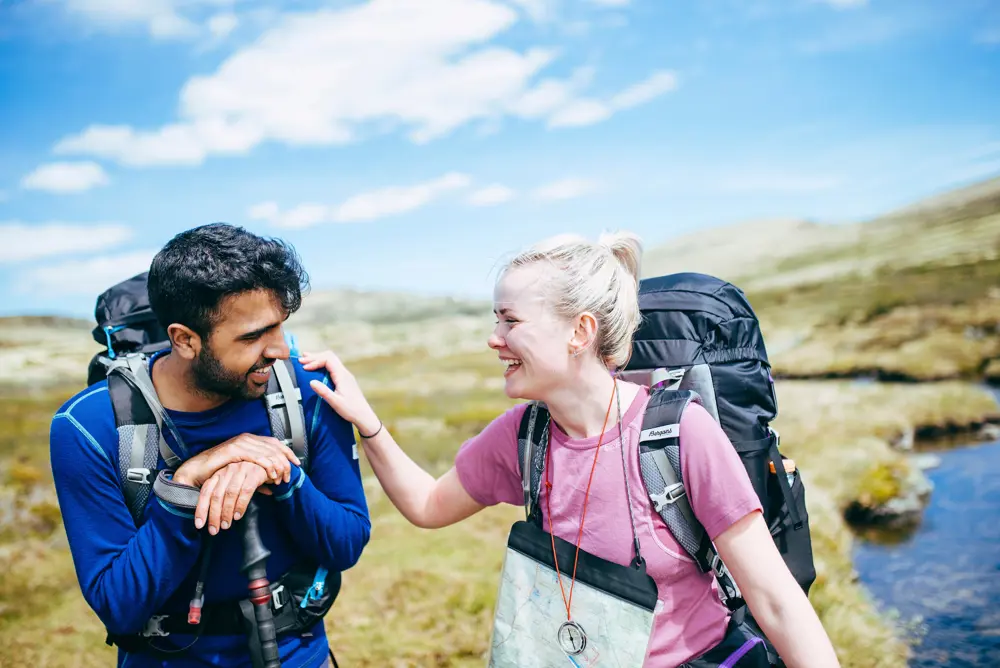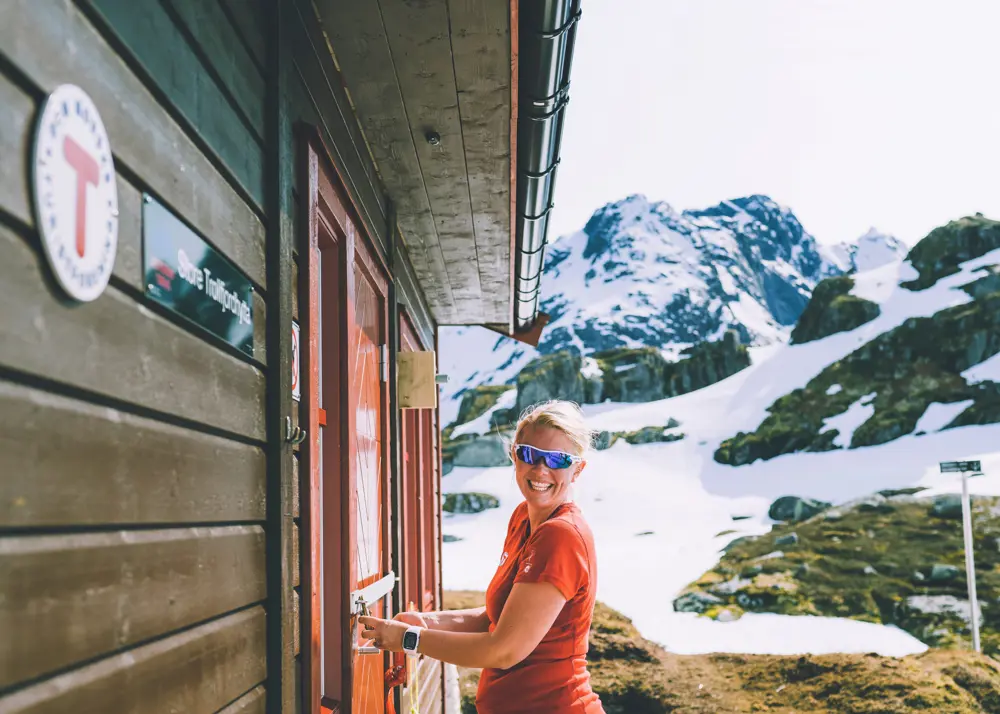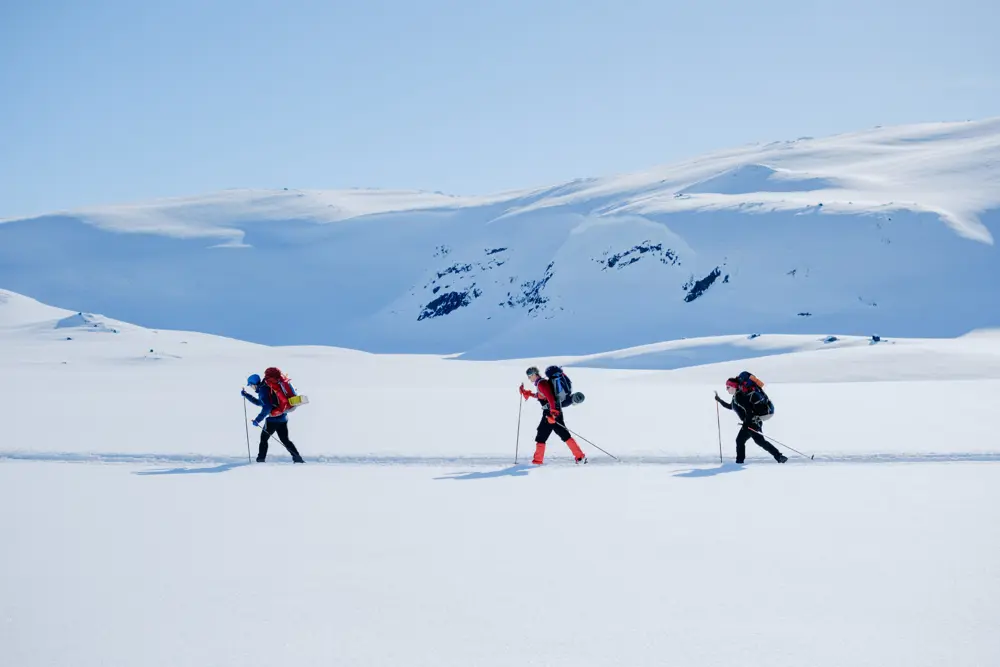
Skiing from cabin to cabin in the winter mountains - this is how you do it
Are you dreaming of a cabin-to-cabin trip in the winter mountains, but are unsure how to do it? Here you will find useful tips and advice for planning and carrying out the trip.
A skiing trip from cabin to cabin in the mountains is different than your regular skiing trips. You will spend the night in DNT cabins along the way, so you do not need to bring a tent and equipment to spend the night outside, but it is important to be prepared for the weather and snow conditions to change quickly, especially in the high mountains. You need to bring the right clothes and equipment, and you must prepare well before you set off.
Planning
Planning is an important part of the trip. Now you are already on our website, which is a very good start. The next step is to go to UT and find a place to go, tour suggestions and cabins that tempt you.
TIP: You can find inspiration and trip tips at dnt.no: Winter's best hiking tips
Once you know where the trip is going, the next step is to get information about the hiking area and the cabins in question. At UT you can read more about route choice, grading, the status of the waymarked ski routes, as well as other conditions — in addition, you get an overview and information about the cabins.
On DNT's cabin booking, you get an overview of which cabins have available beds in the selected time period.
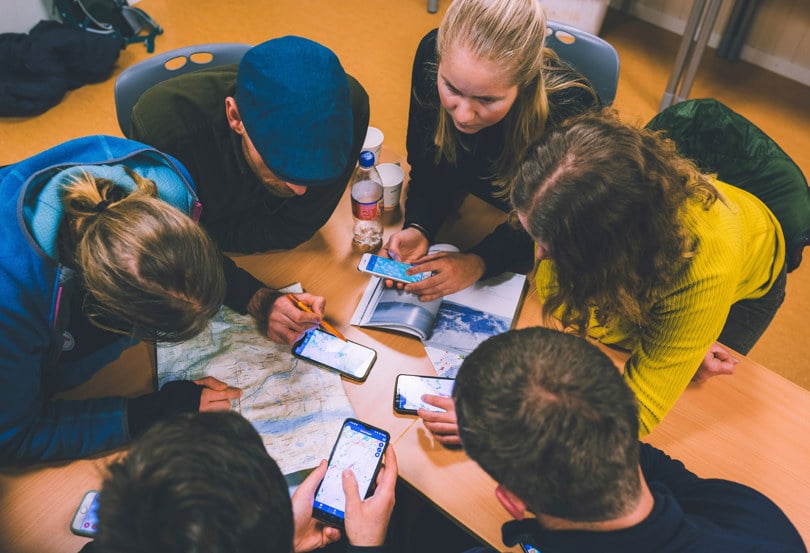
Choose a trip according to ability and conditions
Choose a tour that suits your knowledge and skill level. If you are going ski touring to summits, or move off marked trails, this requires extra knowledge of the winter mountains.
You also need to read up on local weather and snow conditions — also during the planning phase. When is the best time to carry out this winter trip based on your abilities and needs?
TIP: DNT's member associations arrange avalanche courses regularly. Maybe this is also the year to take an avalanche course? Avalanche course
TIP: If you want to learn more about how to travel safely in the winter mountains, check out DNT.no page about what you need to know about the norwegian mountains We especially recommend the articles Avoid avalanches on summit tours and Crossing frozen water
Choose the right equipment for the mountain trip
The right clothing and equipment are very important in the winter mountains. Be prepared for the weather to change quickly. Always bring a backpack and the equipment required by the mountains. You will need safety equipment such as a sleeping bag, wind pack, sleeping mat and shovel, which saves lives every year. In the winter mountains, we also recommend a map and compass.
Packing list for the winter trip
Here is a suggestion for clothes and equipment you should have with you when skiing from cabin to cabin in the winter mountains.
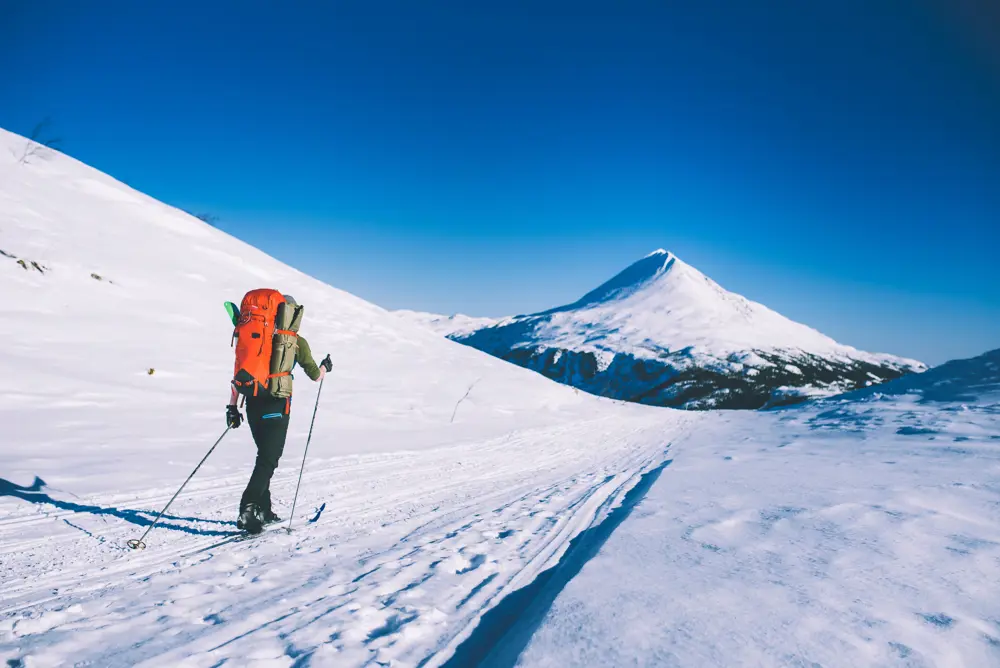
Which skis should I choose?
The winter mountains are demanding, and if you are going to go from cabin-to-cabin over several days, we recommend using cross country skis for the backcountry, with steel edges and mountain ski boots. Cross-country skis for the backcountry (or fjellski as we call them in Norway) are wider than cross-country skis used on prepared trails.
Familiarize yourself with which skis are best for you and the trip you are going on, and consider whether you should use skins or wax the skis.
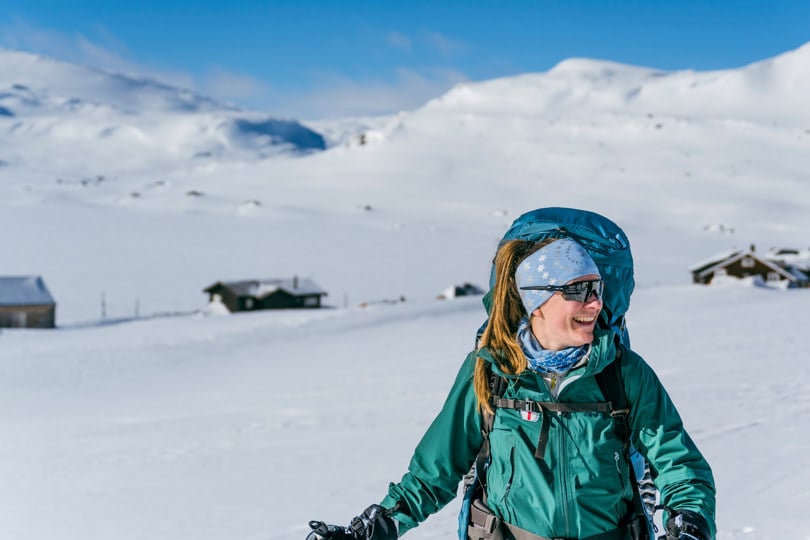
Trails, ski tracks and marked routes
A winter trail is not necessarily a ski trail, and a ski trail is not always a prepared trail. Be aware of this when planning a trip, and check if your route is prepared for cross-country skiing, plowed for hiking or marked for mountain skiing. Or neither.
The main rule is that there are no ski tracks (for cross-country skiing) between the DNT cabins in the high mountains. The most used winter trails in the mountains are marked with branches during the winter season. The specific date for when the various trails are marked can be found on UT — go to ut.no/kart and filter on "Skiløyper". Click on the relevant course you want information about.
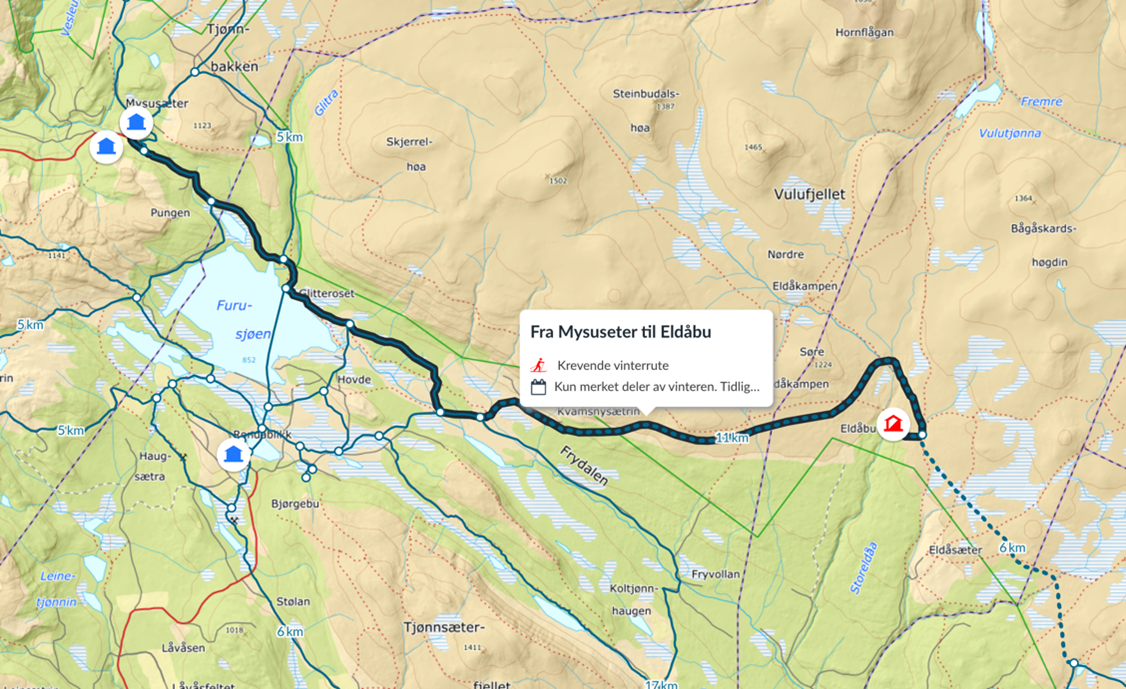
TIP: Use UT to learn more about the different winter trails
TIP: Use skisporet.no or similar services to check if the trail is prepared for cross-country skiing.
Waymarked ski routes
Winter skiing tracks in the mountains are are staked, with temporary tree branches or poles stuck in the snow or with permanent rods driven into the ground, often marked with red bands.
The marking is done by experienced mountain people who know where the safest route is between the cabins. For example, the most commonly used winter routes in the mountains are marked with branches during the winter season, some are marked around the winter holidays. Most are marked at Easter.
Some of the twigs remain until they fall due to snow melting or the like. Some twig routes are taken down immediately after Easter is over. Sometimes there are conditions in the mountain that cause the twig route to be changed compared to what is drawn on the map, or postponed for a few days.
Read more about winter marking
Use of DNT's cabins
DNT has over 590 cabins you can stay at, and they are known for their informal and cozy atmosphere. The cabins can be no service cabins, self-service cabins with a stock of provisions, and staffed lodges with a host and food service.
We recommend booking a bed/room in advance — then you are guaranteed a bed/room for yourself and the entire travel party — this is done on DNT's cabin booking.
- Read more about the cabin categories here: The different DNT cabins
- Read more about the cabin visit at a self- or no-service cabin here: The cabin visit from A to Z
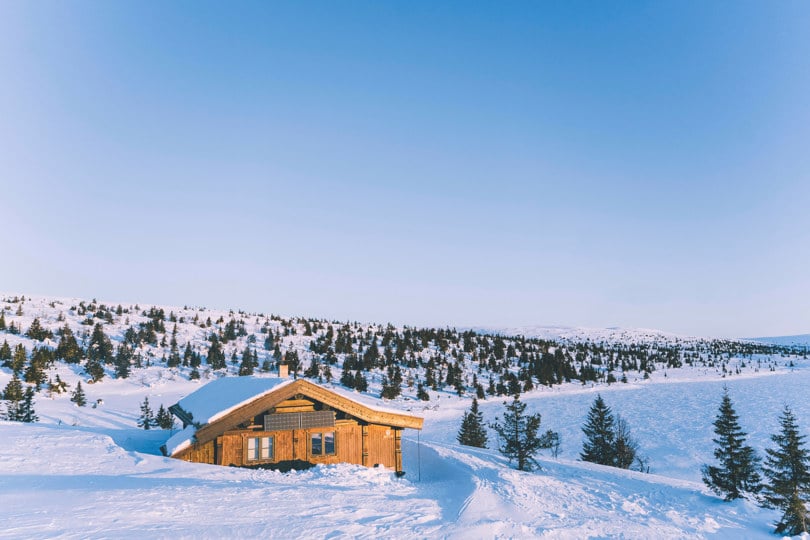
Opening hours
Information about the opening hours of a cabin can also be found on UT or on the serviced cabin's own website. This applies to Jotunheimen, Breheimen, Skarvheimen, Femundsmarka and Hardangervidda, among others. Many of the cabins are located within protected areas where we are required to take into account wildlife management and fauna, such as wild reindeer.
Key and access to the DNT cabins
Most no-service and self-service DNT cabins are locked with a DNT key, while some DNT cabins are unlocked all year round. The staffed lodges have their own hosts who welcome you during the cabin's opening hours and are therefore not locked. A few cabins are locked with a special key or code lock.
Information about key/lock can be found on the cabin's page on UT.no.
TIP: You can get the DNT key at DNT's shops and tour centers, or at dntbutikken.no.
Read more about the cabin visit: Questions and answers about the DNT cabins
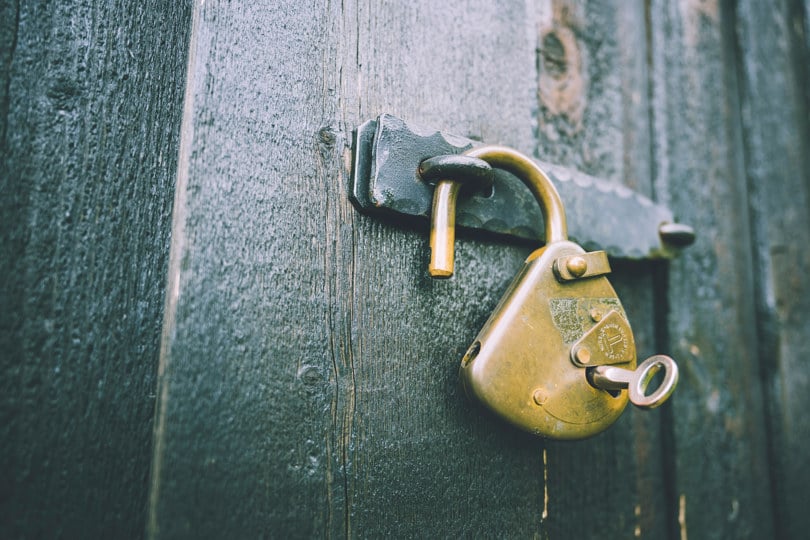
Public transport to the mountains
Use entur.no to find transport.
TIP: Take the Bergen Railway to Finse, Haugastøl or Hallingskeid. Starting from these places, you can experience Hardangervidda, Hallingskarvet and Skarvheimen. You can also take the train to Hjerkinn for trips in Rondane or to Kongsvold for trips in the Dovre mountains. Take a bus to Tyin and a snowcat on to Fondsbu or bus to Haukeliseter for trips both north and south.
Other tips and tricks
-Novice? Then we recommend waiting with the winter trip until late in the season. Then the days are longer and the temperature is usually warmer. In addition, several branched routes are marked around Easter.
- The mountain code is always applicable — but perhaps even more relevant in the winter mountains. Read up here: The Norwegian Mountain Code
See also
